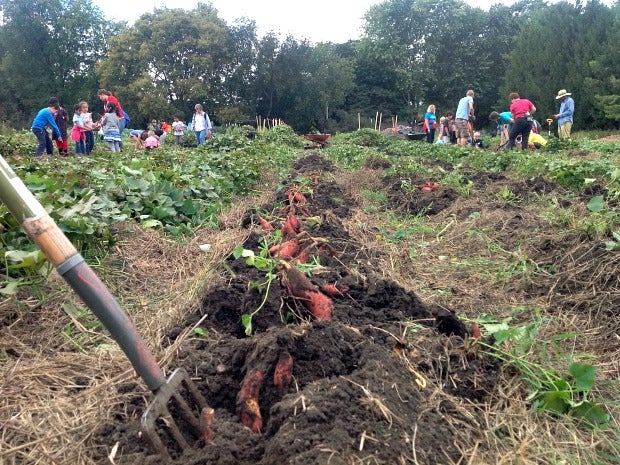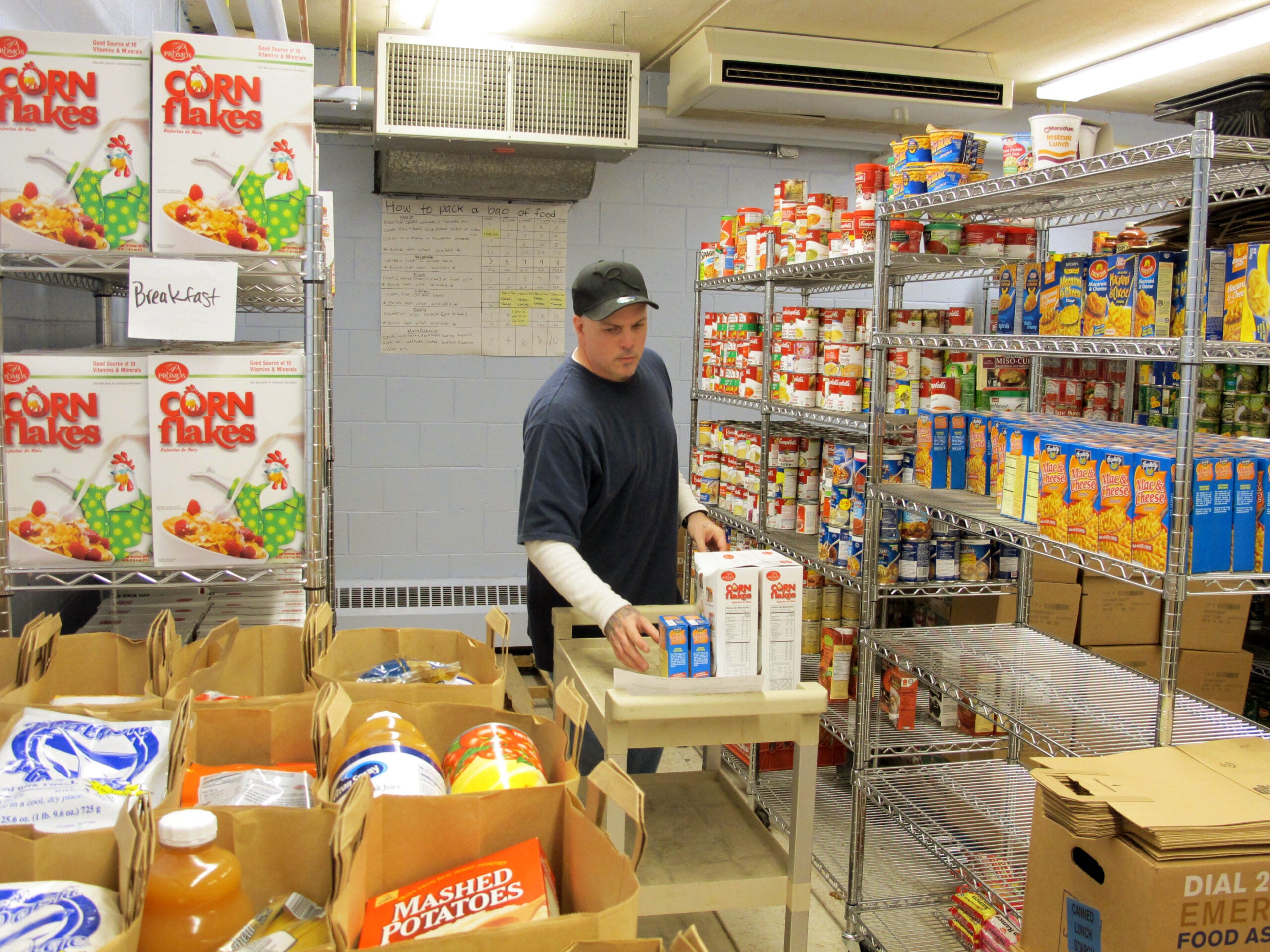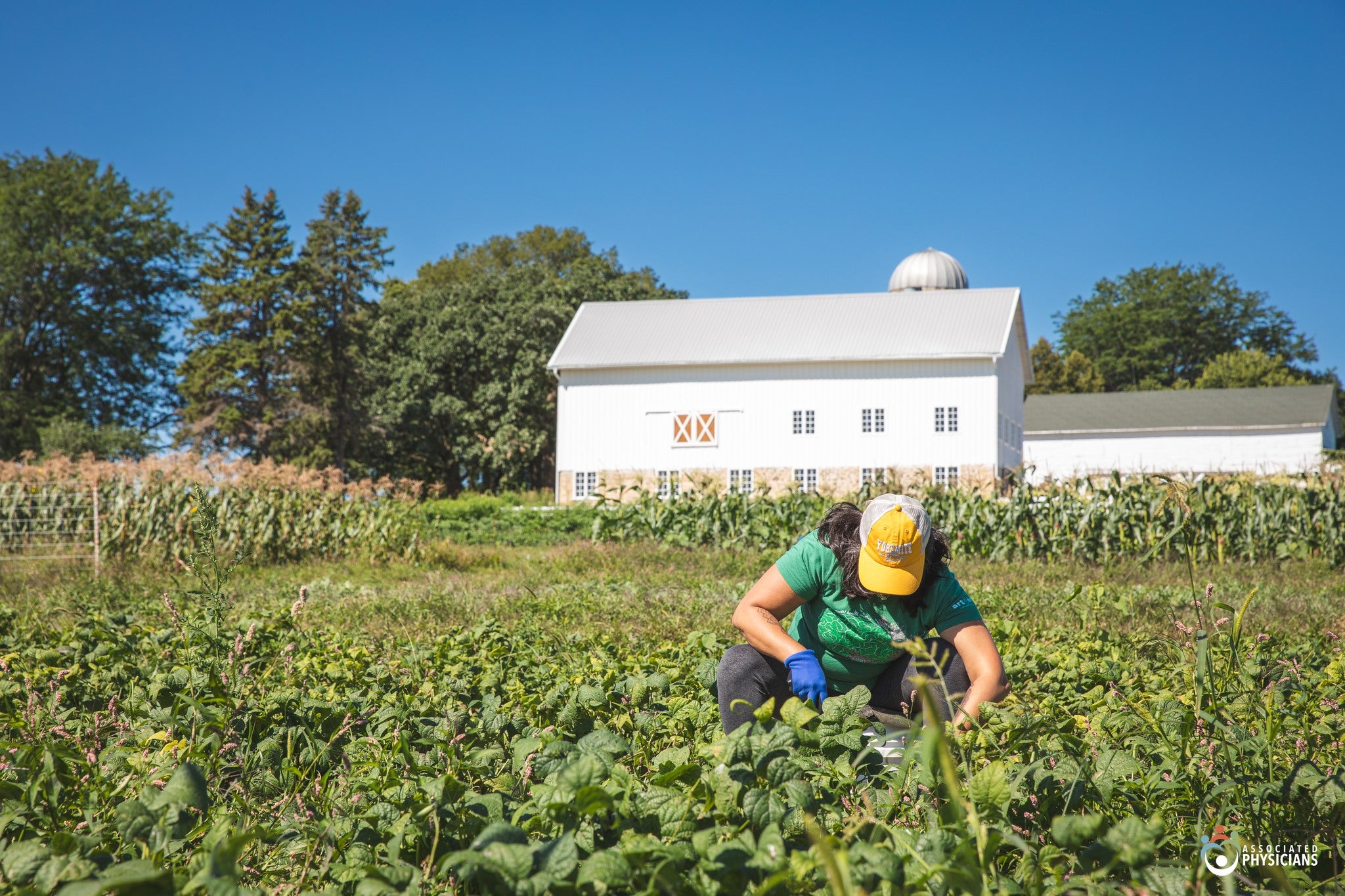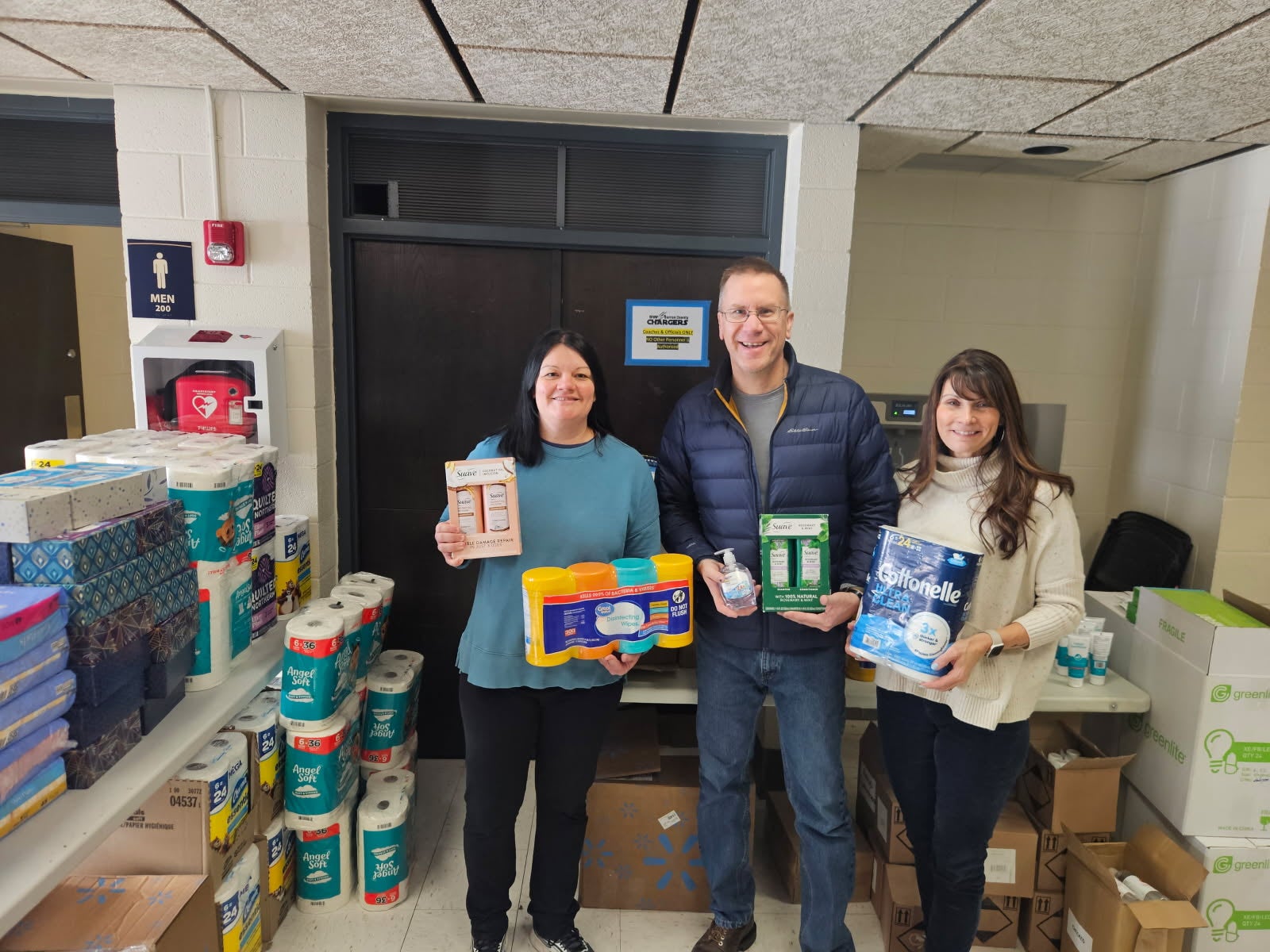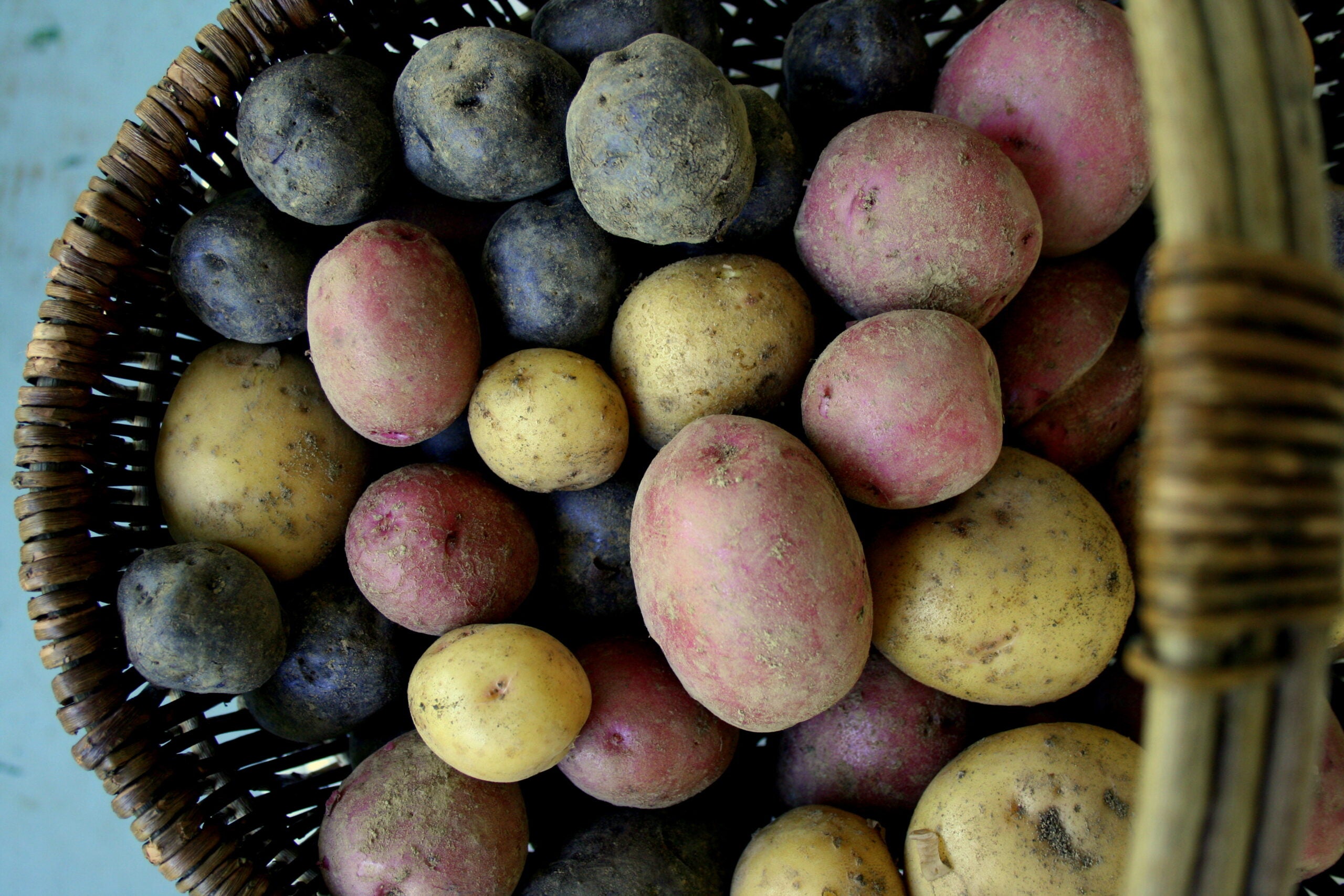Dane County has rich farmland, dedicated farmers and gardeners, and some of the best homegrown food in the country. But not everybody is able to enjoy the region’s bounty.
The Dane County Sweet Potato Project is working to provide an affordable, nutritious vegetable for people who experience food insecurity, meaning they lack assured access to sufficient food to lead healthy and active lives. Each spring, project participants receive sweet potato slips to plant, grow and harvest, donating half their yield to local food pantries. Properly cured sweet potatoes can last a year without refrigeration, which makes them ideal for stocking pantries — and easing food insecurity.
According to U.S. Census Bureau estimates, 13.4 percent of Dane County residents live in poverty. Once rent, utilities, transportation and other living expenses are accounted for, families often don’t have enough money to cover food, so they may rely on food pantries to help get through the month.
News with a little more humanity
WPR’s “Wisconsin Today” newsletter keeps you connected to the state you love without feeling overwhelmed. No paywall. No agenda. No corporate filter.
The sweet potato project is one local effort to make a nutritious food available in pantries. Statewide, the Wisconsin Food Security Project provides data and resources to promote food security by helping University of Wisconsin-Extension educators, planners, policymakers and others identify challenges and infrastructure needs in their communities. The project is a collaboration of the UW-Extension Family Living Programs, the Applied Population Laboratory and UW-Madison School of Human Ecology.
Launched in 2013, the Dane Count Sweet Potato Project is a partnership of Dane County UW-Extension, Equinox Community Farm, Slow Food Madison, River Food Pantry, Community Action Coalition of South Central Wisconsin and Healthy Food for All. Project participants include not only home gardeners, but community gardens, food pantry gardens and small farms too, engaging a wide variety of people around Dane County communities to address hunger. Since the project began, hundreds of gardeners and farmers have donated more than 5,000 pounds of sweet potatoes to food pantries.
Sweet potatoes are beautiful plants that are easy to grow, don’t need rich soil, love summer heat and store well without refrigeration in a cool setting. The slips are leafed rootings grown organically by the Kansas State Horticulture Department. The project uses the Louisiana-bred Beauregard variety of the root vegetable, which has nutritious, orange flesh and a long shelf life. Just as importantly, this variety matures fast, making it well suited to Wisconsin’s growing season.

Dane County Sweet Potato Project volunteers, including middle school students, Community Groundworks interns and Master Gardener Volunteers, plant slips at the Goodman Youth Grow Local Farm. Joe Muellenberg
Sweet potato plants are vines, needing at least a 3-foot-square area apiece. Each plant produces roughly 3 to 5 pounds, though this amount varies with growing conditions. The sweet potatoes grow right up until the first frost, at which point they must be harvested. (In a pair of video tutorials, John Binkley of Equinox Community Farm demonstrates how to plant slips and harvest the tubers.)
After harvesting, the grower needs to cure the sweet potatoes. This process heals any small wounds and enhances sweetness by converting the root’s starches to sugars. Ideally, sweet potatoes should be kept in a space (like a greenhouse or four-season porch) for about 10 days at 80-85 degrees Fahrenheit and high humidity (85-90 percent). If such an environment is not available, they can be cured next to a furnace for two to three weeks at 65-75 F. One method for providing the required high humidity is to stack storage crates or boxes and cover them with paper or heavy cloth. Also, packing the sweet potatoes in perforated plastic bags allows excess moisture to escape.
Once cured, sweet potatoes should be moved to a dark location where a temperature of about 55-60 F can be maintained during storage. Sweet potatoes should not be stored in refrigerators, as cooler temperatures can damage them. Wrapping cured sweet potatoes in newspaper and storing them in a cool closet or basement is a great option. Kept properly in ideal conditions, sweet potatoes will last six to 10 months.
The Dane County Sweet Potato Project offers educational workshops each spring to help growers be successful in raising their crop. This year’s workshops are scheduled for May 17 at Willy Street Co-op East in Madison and May 25 at Willy Street Co-op West in Middleton. Online registration is required for the workshops and to request slips. Anybody can contribute by making a monetary donation to help cover the cost of the slips, and the project will find others to grow them.
The project is just one small way people can increase food security in Dane County.
Editor’s Note: Carrie Edgar is the Dane County UW-Extension department head and community food systems educator, Joe Muellenberg is the Dane County UW-Extension horticulture program coordinator, and Alissa Schmitz is with Dane County UW-Extension AmeriCorps VISTA.
This report was produced in a partnership between Wisconsin Public Radio, PBS Wisconsin and the University of Wisconsin Cooperative Extension. @ Copyright 2025, Board of Regents of the University of Wisconsin System and Wisconsin Educational Communications Board.

